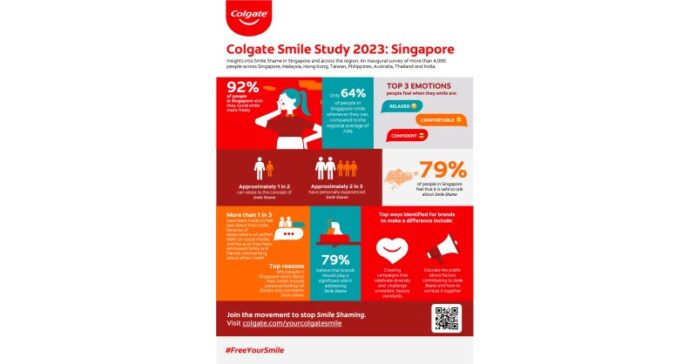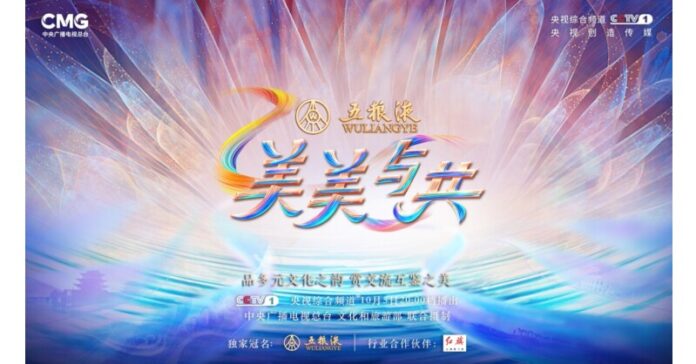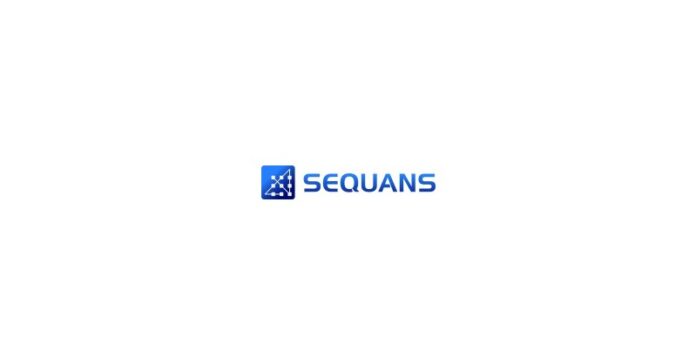On World Smile Day®, Colgate launches its #FreeYourSmile campaign by adapting its logo to celebrate all smiles
SINGAPORE – Media OutReach – 6 October 2023 – This World Smile Day®, global personal and home care brand Colgate-Palmolive (“Colgate”) is taking a stand against Smile Shaming, underscoring the beauty and importance of all smiles through its #FreeYourSmile campaign. This is especially significant given the proven benefits smiles bring to society’s health, mental wellbeing and social bonding. The region-wide campaign kickstarts Colgate’s efforts to tackle this complex topic for society and drive real positive change.

Colgate first commissioned an independent study across Asia Pacific to gain insights and inform initiatives to propel this movement to eradicate Smile Shame for society to fully gain the benefits of smiling.
The Colgate Smile Study 2023 found that a resounding 92 per cent of Singaporeans would like the ability to smile more freely. The main reason why they say they cannot smile freely is because of the fear of being judged. These findings are consistent across the region where approximately 9 in 10 people in Asia Pacific wish they could smile without reservations. Only 64 per cent of Singaporeans smile whenever they can, compared to the regional average of 74 per cent.

The inaugural study, conducted by research company Pureprofile in August – September 2023, surveyed more than 4,000 individuals aged 16 to 55 years old across eight Asia-Pacific markets namely Singapore, Malaysia, Hong Kong, Taiwan, Philippines, Australia, Thailand and India. More than 500 individuals were surveyed in Singapore.
Yves Briantais, Executive Vice President, Marketing Asia-Pacific, Colgate-Palmolive said, “Smile Shame is especially prevalent in Asia Pacific and this must change. At Colgate, we are on a mission to free people from the constraints of Smile Shame to truly embrace their own unique smiles. We believe brands have the power to challenge unrealistic beauty standards and promote authenticity. This World Smile Day®, Colgate is leading the charge by celebrating all smiles.”
79 per cent of Singaporeans believe that brands should have a role to play in tackling the issue of Smile Shame, according to the Colgate Smile Study 2023.
This World Smile Day®, Colgate is celebrating all smiles by adapting its iconic logo to represent the many different and beautiful smiles that surround us daily. Colgate is also collaborating with influencers across the region to further champion this cause including well-known actress and TV personality Xixi Lim from Singapore who has experienced Smile Shame because of a chip on her front tooth but is now embracing her smile which perfectly reflects her unique self.
Additionally, as part of #FreeYourSmile, Colgate is introducing a Smile Generator AI tool at colgate.com/yourcolgatesmile, encouraging everyone to create their personalised Colgate smile on TikTok and Instagram, and spread the message to celebrate all smiles. Digital Out of Home content in areas such as Ion Orchard, CIMB Plaza, Raffles Place, Raffles City and One Raffles Place will further encourage more people to join the movement.
Advocating for the Benefits of Smiling for Singaporeans
Singaporeans indicate that they generally feel relaxed, comfortable and confident when they smile freely. In fact, scientific research supports the idea that smiling positively impacts mental health, acting as natural antidepressants and pain relievers[1]. Smiling is also good for the heart, aiding in lowering blood pressure and expediting recovery after stressful events[2].
A key health benefit of smiling includes strengthening the immune system by increasing white blood cell counts, providing protection against infections[3]. Socially, smiling is a powerful tool to foster bonds and building trust by making a lasting positive impression on others[4].
Standing against Smile Shame
Smile Shame may not be a familiar term to many. It encapsulates the feelings of embarrassment, self-consciousness, or insecurity regarding one’s smile.
The Colgate Smile Study 2023 revealed that 54 per cent of Singaporeans can relate to the concept of Smile Shame, with two in five having personally experienced it. 36 per cent of Singaporeans have been made to feel bad about their smile because of expectations of perfect teeth on social media, and because they’ve also witnessed family and friends commenting about others’ teeth.
Ivan Chong, General Manager (Singapore), Colgate-Palmolive, “While Smile Shame continues to be a challenge here in Singapore, it is heartening to note that more than four in five Singaporeans feel that it is safe to openly discuss Smile Shame and its effects on personal insecurities. Colgate’s #FreeYourSmile campaign is the first step we are taking to combat Smile Shame, empowering everyone to smile more freely and confidently.”
79 per cent of Singaporeans feel that it is safe to talk about Smile Shame, a sentiment primarily driven by the belief that society is becoming more open and accepting of transparent dialogue discussing personal insecurities.
Celebrating the Diversity of Smiles
Smile Shame is associated with different attributes across markets, reflecting diverse perceptions of what makes a beautiful smile. In Singapore, Smile Shame is typically associated with colour of teeth and whether their smile appears fake.
The Colgate Smile Study 2023 also revealed that the key factor that makes Singaporeans worry about their smile is their own feeling of self-doubt. This was followed by concerns about comments from others including family, friends, and even strangers.
#FreeYourSmile is the first step in Colgate’s mission to celebrate all smiles, inspire individuals to express themselves freely and proudly, and combat Smile Shame, with more initiatives in the pipeline.
Generate your own unique Colgate Smile today: colgate.com/yourcolgatesmile
2 Smile! It’s Good for Your Heart’ (Sep 2012) Greater Good Science Center at the University of California, Berkeley. Available at: https://greatergood.berkeley.edu/article/item/smile_its_good_for_your_heart
Hashtag: #Colgate
The issuer is solely responsible for the content of this announcement.
About Colgate-Palmolive Company
Colgate-Palmolive Company is a caring, innovative growth company reimagining a healthier future for all people, their pets and our planet. Focused on Oral Care, Personal Care, Home Care and Pet Nutrition, they sell their products in more than 200 countries and territories under brands such as Colgate, Palmolive, elmex, hello, meridol, Sorriso, Tom’s of Maine, EltaMD, Filorga, Irish Spring, PCA SKIN, Protex, Sanex, Softsoap, Speed Stick, Ajax, Axion, Fabuloso, Soupline and Suavitel, as well as Hill’s Science Diet and Hill’s Prescription Diet. We are recognized for our leadership and innovation in promoting sustainability and community well-being, including our achievements in decreasing plastic waste and promoting recyclability, saving water, conserving natural resources and improving children’s oral health through the Colgate Bright Smiles, Bright Futures program, which has reached more than 1.4 billion children since 1991. Our range of products are for everyone to find a way to get the smile they want.
For more information about Colgate’s global business and how we are building a future to smile about, visit ![]() www.colgatepalmolive.com.
www.colgatepalmolive.com.
This content was prepared by Media OutReach. The opinions expressed in this article are the author's own and do not reflect the view of Siam News Network.
















